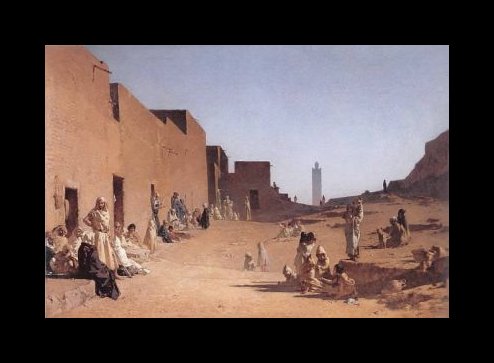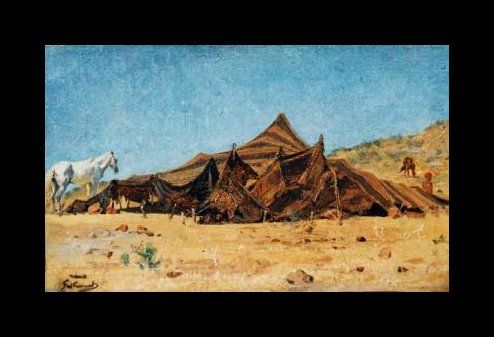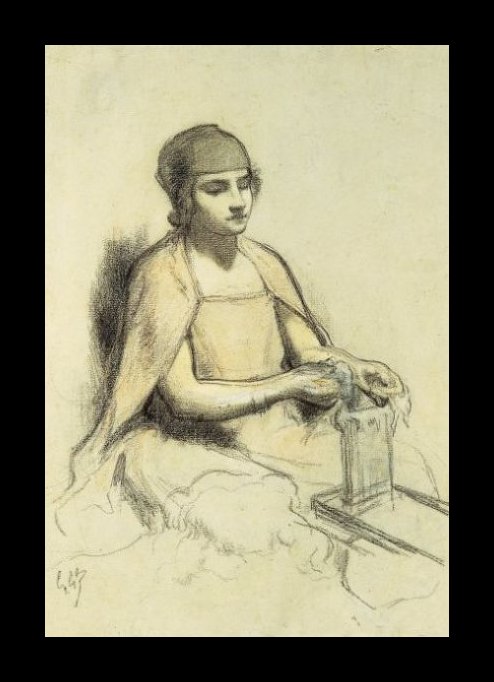Gustave Guillaumet (1840-1887)
Get a Guillaumet Certificate of Authenticity for your painting (COA) for your Guillaumet drawing.
For all your Guillaumet artworks you need a Certificate of Authenticity (COA) in order to sell, to insure or to donate for a tax deduction.
Getting a Guillaumet Certificate of Authenticity (COA) is easy. Just send us photos and dimensions and tell us what you know about the origin or history of your Guillaumet painting or drawing.
If you want to sell your Guillaumet painting or drawing use our selling services. We offer Guillaumet selling help, selling advice, private treaty sales and full brokerage.
We have been authenticating Guillaumet and issuing certificates of authenticity since 2002. We are recognized Guillaumet experts and Guillaumet certified appraisers. We issue COAs and appraisals for all Guillaumet artworks.
Our Guillaumet paintings and drawings authentications are accepted and respected worldwide.
Each COA is backed by in-depth research and analysis authentication reports.
The Guillaumet certificates of authenticity we issue are based on solid, reliable and fully referenced art investigations, authentication research, analytical work and forensic studies.
We are available to examine your Guillaumet painting or drawing anywhere in the world.
You will generally receive your certificates of authenticity and authentication report within two weeks. Some complicated cases with difficult to research Guillaumet paintings or drawings take longer.
Our clients include Guillaumet collectors, investors, tax authorities, insurance adjusters, appraisers, valuers, auctioneers, Federal agencies and many law firms.
We perform Gustave Guillaumet art authentication. appraisal, certificates of authenticity (COA), analysis, research, scientific tests, full art authentications. We will help you sell your Gustave Guillaumet or we will sell it for you.
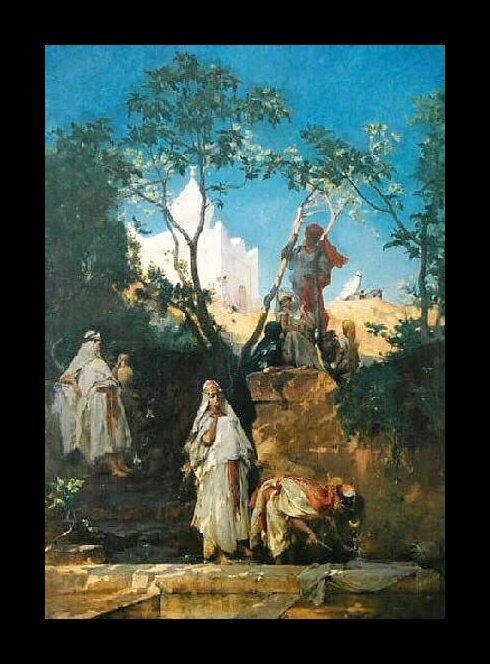
Gustave Guillaumet was an Orientalist painter, and one that was passionate about his subject matter. During his life it is believed that he travelled to Northern Africa at least ten times. He was the son of a manufacture in Puteaux in France, and he initially studied under Picot, and Barrias. In 1857, he entered the Ecole des Beaux Arts as a pupil of the Orientalist, Abel de Pujol.
In 1862, he decided to go and study in Rome. On impulse he changed his route, and embarked at Marseille for North Africa. This decision was to change the course of his artistic career. Despite falling ill on numerous occasions with malaria, he was to return to Algeria, and Morocco, time and time again.
In 1863, he exhibited a painting at the Salon, entitled “Evening prayers in the Sahara”. This painting was very well received, and was purchased by the State for 4000 Francs. It now hangs in the Musee d’Orsay. The purchase of this painting was to mark the beginning of a very successful career as an Orientalist.
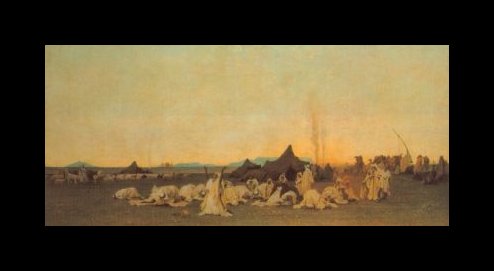
In his travels, Guillaumet was very much attracted to the southern extremities of Algeria, around Biskra, and the Hodna region. These regions still preserved ethnic customs, and traditions, as they were untainted by the European colonial presence. He spent much time with the people of these regions, depicting the people themselves, together with their dwellings, and the work they undertook. The sympathetic, and realistic way in which he portrayed them, was to lead to him being regarded as the Orientalist counterpart of Jean Francois Millet.
Throughout his artistic career, he was successful at the Salon. He won medals in 1865, 1867, and 1872. In 1878, he was made a Knight of the Legion of Honour.
A particularly powerful painting of his, entitled, “The Desert (The Sahara),” provoked a strong reaction at the Salon of 1868. It showed a camel, which had fallen prey to the vermin of the desert. Guillaumet thought the camel to be an exceptionally noble animal and he admired this animal immensely. This painting now hangs in the Musee d’Orsay.
The painting entitled, “The ‘Seguia,’ Biskra,” also hangs in the Musee d’Orsay. This painting was produced in 1884. This painting differs from his earlier work, and shows Arab figures in Biskra accentuated against barren rock, and unwelcoming architectural features, together with the intensity of light. Guillaumet was very much concerned with the light, both in his art, and also in terms of how it affected the every day life of those living in the desert.
He even wrote an article on the theme of light which was published in 1879. He discussed the harmony created by the violent oppositions of colour echoed in the cycle of life, and spoke of the oneness between man and nature.
Another particularly powerful painting of Guillaumet which hangs in the National Gallery of London, entitled, “Mountains in North Africa with a Bedouin Camp,” shows white robed Bedouins moving across the desert.
From 1882, he began to exhibit pastels, and art critics have said that this medium with its soft nuances of colour was particularly suited to his sensitive observations. In 1883, he traveled for the last time to Northern Africa, and in 1886, he traveled to Italy, and thus completed the journey that he had begun twenty four years previously.
